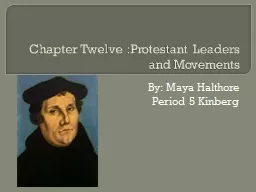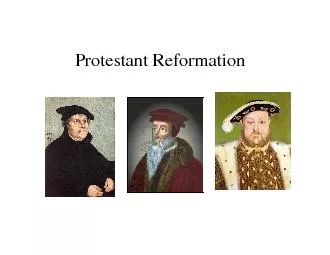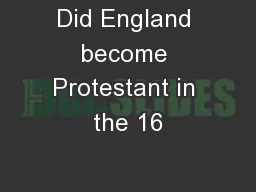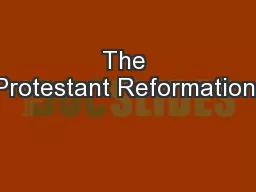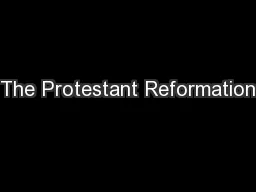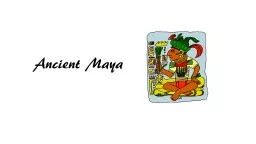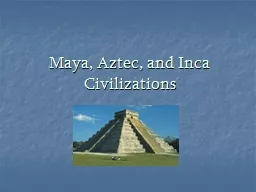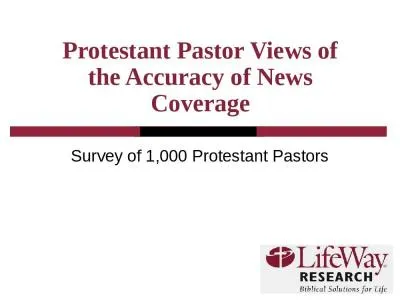PPT-Chapter Twelve :Protestant Leaders and Movements By: Maya Halthore
Author : conchita-marotz | Published Date : 2019-11-05
Chapter Twelve Protestant Leaders and Movements By Maya Halthore Period 5 Kinberg Early Ideas The reformation did not simply begin when Martin Luther nailed his
Presentation Embed Code
Download Presentation
Download Presentation The PPT/PDF document "Chapter Twelve :Protestant Leaders and M..." is the property of its rightful owner. Permission is granted to download and print the materials on this website for personal, non-commercial use only, and to display it on your personal computer provided you do not modify the materials and that you retain all copyright notices contained in the materials. By downloading content from our website, you accept the terms of this agreement.
Chapter Twelve :Protestant Leaders and Movements By: Maya Halthore: Transcript
Download Rules Of Document
"Chapter Twelve :Protestant Leaders and Movements By: Maya Halthore"The content belongs to its owner. You may download and print it for personal use, without modification, and keep all copyright notices. By downloading, you agree to these terms.
Related Documents

